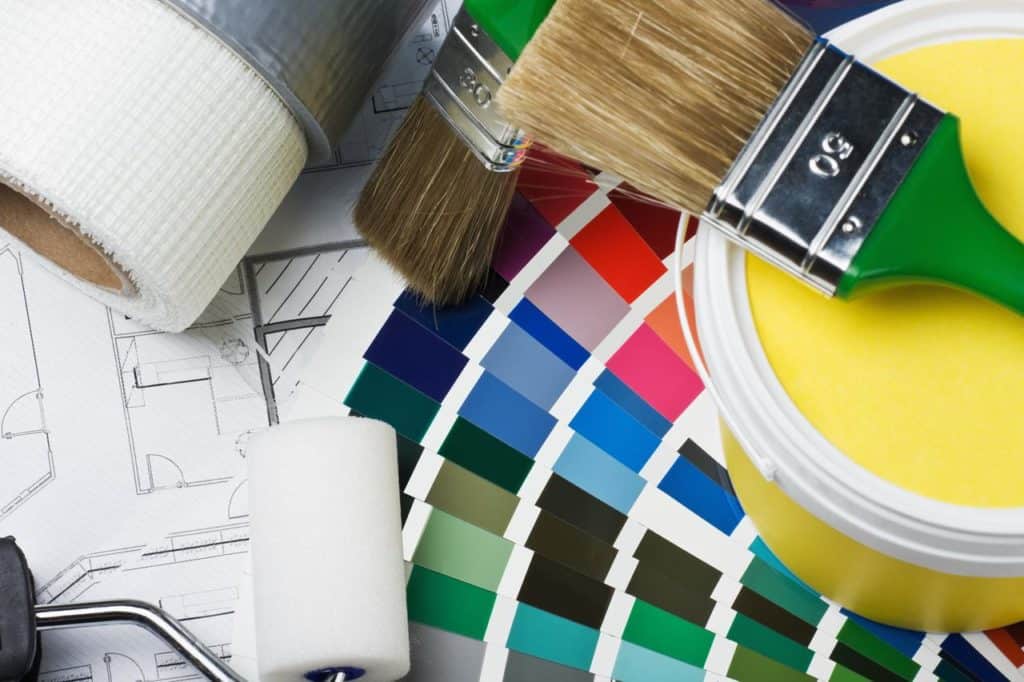
When you are selecting paint, lacquer, polyurethane or varnish for finishing a surface you will have to decide what type of sheen you prefer. Coatings are generally classified in a range from flat to glossy. Understanding the differences and typical uses will help you choose the right one for your requirements.
What Is Sheen? The Definition.
Sheen refers to the degree of how shiny a surface is, i.e. how much glitter or luster it shows (source). In the context of finishes and coating for wood, walls, furniture and other surfaces, the amount of sheen is distinguished into
- Flat,
- Matte,
- Eggshell,
- Satin,
- Semi-Gloss,
- Gloss (also full-gloss or high-gloss).
Read on to learn the details about each of these types of sheen.
What Are the Different Classes of Sheen?
The different classes of sheen differ by the reflectiveness of the surface and by the subtleness of their look. However, the appearance also varies slightly depending on the kind of surface and type of coating that you are using.
Lacquer and paint, for instance, add a coat to the top of a surface. Thus, such finishes – even the matte ones – tend to be glossier on wood and other hard material than on walls and material that allows them to soak in. This is even true for colorless lacquer although it retains the look of original wood grains.
Many polyurethane and varnish products are penetrating wooden surfaces though. Thus, surfaces are less shiny even if you go for gloss varnish or poly.
Diagram: Grades of Sheen from Flat to Gloss
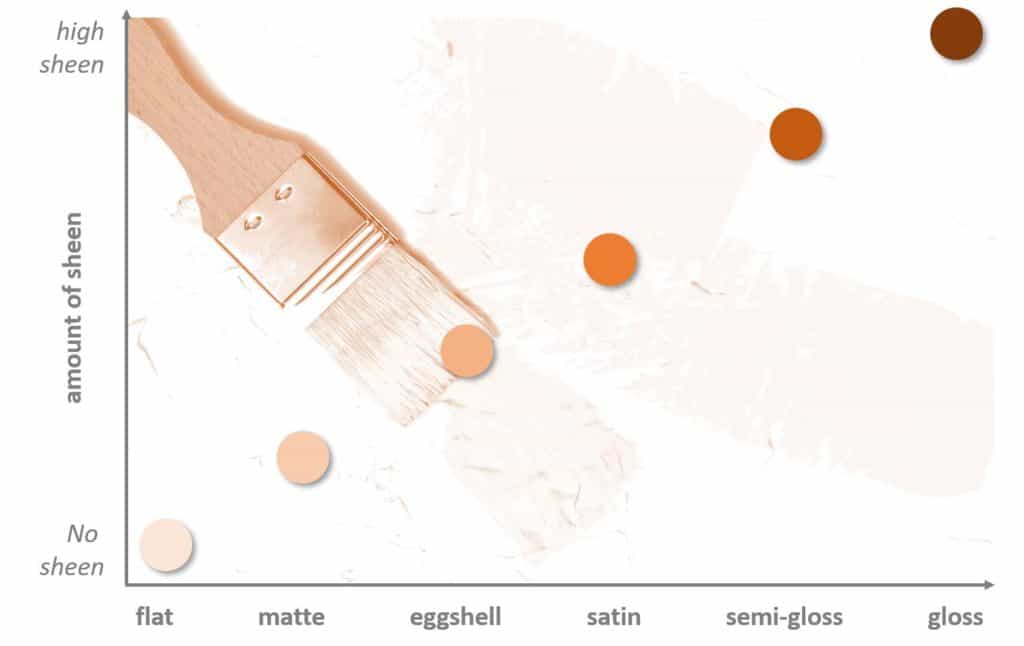
Flat Finish
Flat is the least shiny kind of finish. It is hard (if not impossible) to achieve this look with lacquer, color or polyurethane. This is because they add a transparent or color coat to a surface which has a certain natural minimum of sheen.
However, flat glossless wall paints and – for wood – oils as finishes allow for a flat appearance of the surface.
The flat type of sheen is usually preferred if the natural look of a wooden object or furniture shall be retained.
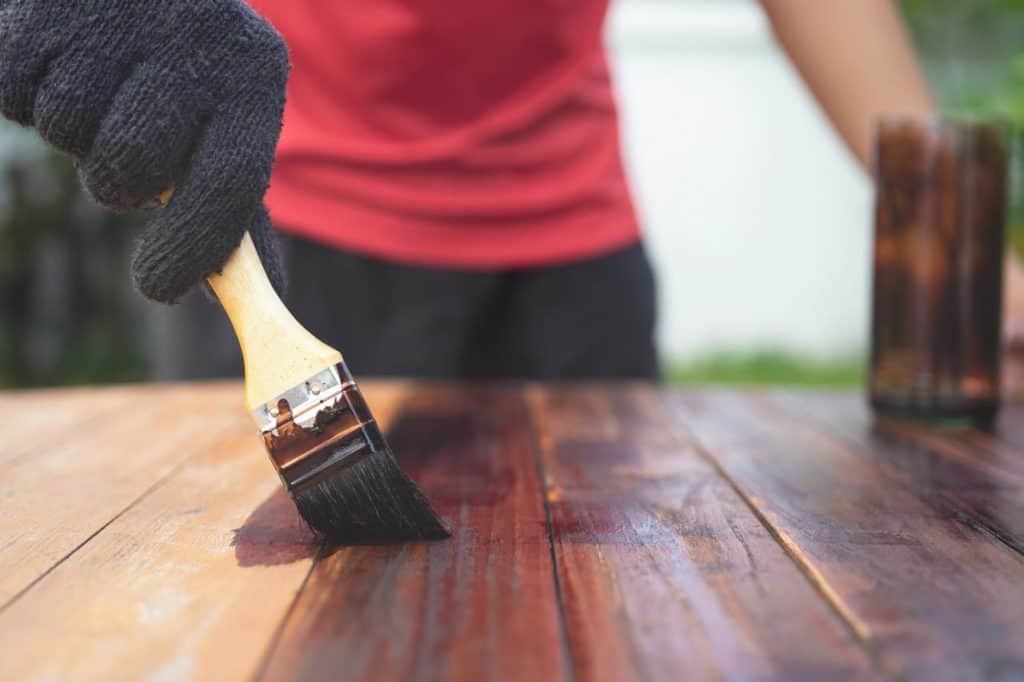
Matte Finish
Matte finishes are often perceived as elegant yet subtle. Wall paint is often chosen with a matte sheen but also finishes for floors (polyurethane) and furniture (oils, varnish).
Eggshell Finish
As the name suggests, eggshell finishes resemble the reflectiveness of unpeeled eggs. This involves a low degree of sheen and is a typical choice for wall paint.
Satin Finish
Satin finishes are somewhat reflective without being glittering. Think of satin clothes which are shinier than those made of silk, for instance.
Satin paint, lacquer and polyurethane finishes are sometimes described as vivid and slightly shiny. Yet, they are still significantly less ‘obtrusive’ than gloss coatings.
Satin paint is used for walls and wood, for instance. Satin polyurethane and varnish are popular choices when it comes to hardwood floors.
Semi-Gloss Finish
Being second to full-gloss in this list, semi-gloss coats come with some luster and tend to be quite light-reflective. Semi-gloss lacquer and varnish produce an elegant wood finish that enhances the natural grain by adding a coat of luster to it.
When painting rooms, semi-gloss paint might not be ideal for bedrooms but can be a good choice for kitchen or living rooms.
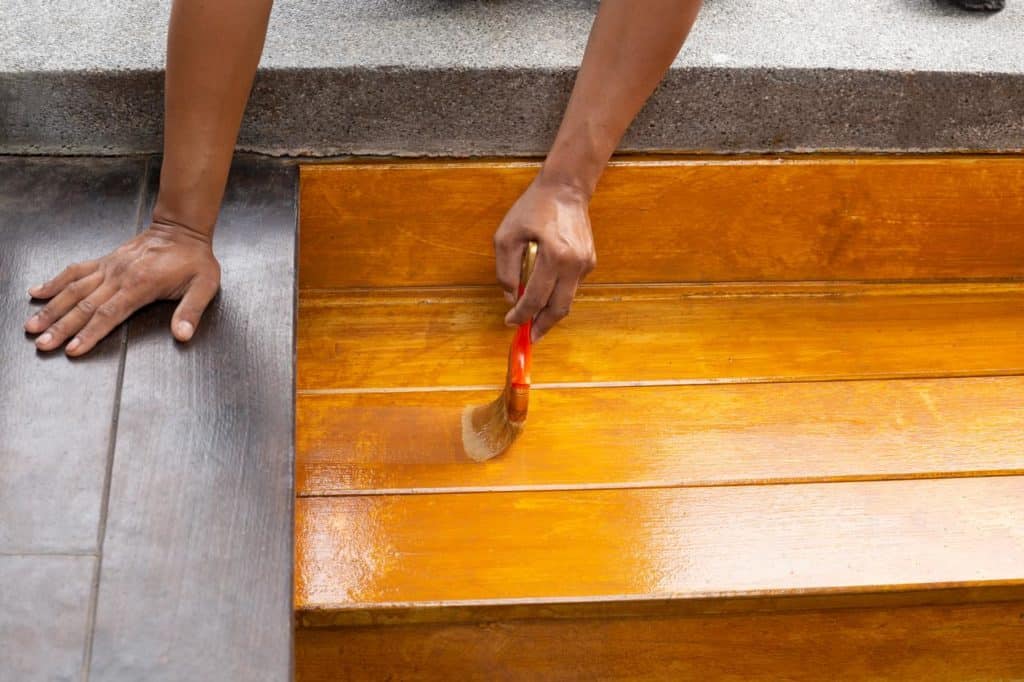
Gloss (also full-gloss or high-gloss) Finish
The most reflective type of finish is referred to as gloss, full-gloss or high-gloss. Depending on the color and number of coats of paint, lacquer or polyurethane, it can have an appearance ranging from high light-reflectiveness to an almost mirror-like effect.
When transparent gloss lacquer, varnish or polyurethane are used on wood, the result is often described as having a ‘wet look’ or even a ‘plastic-like’ appearance.
Nevertheless, gloss coatings can be a great finish for furniture. Gloss wall paint is popular for kitchens and commercial premises.
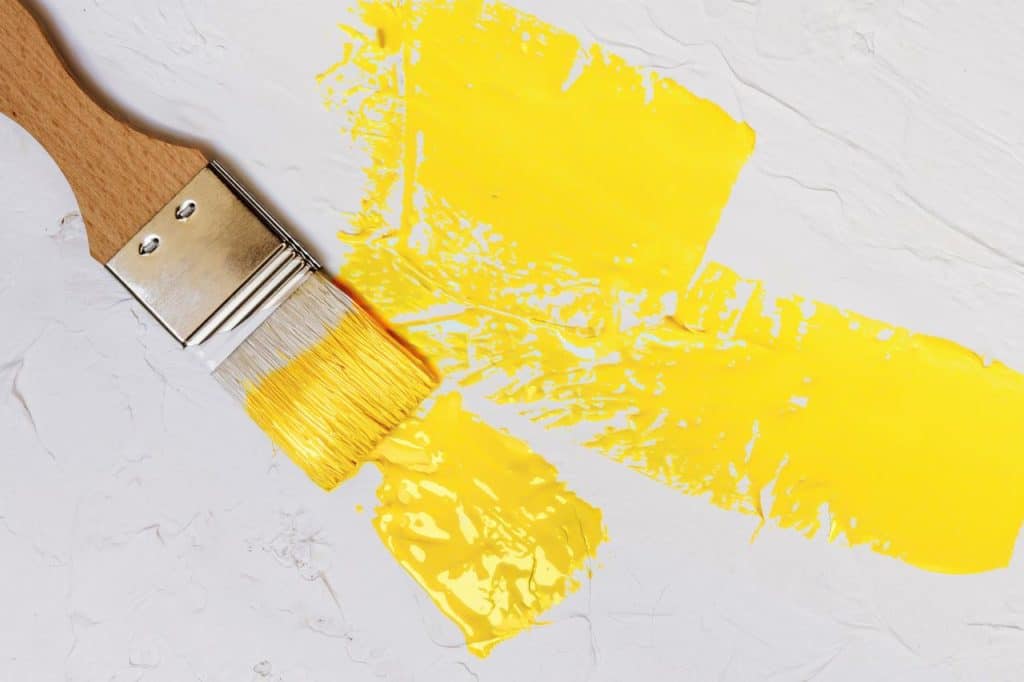
What to Consider When Choosing the Right Amount of Sheen?
Appearance and Material
An obvious criterion when choosing a type of sheen is the look. When selecting a wall paint, consider the appearance of the wall and the intended atmosphere of the room. A gloss sheen may be attractive for kitchen walls while low-sheen options may be the better choice for bedrooms.
When you are finishing wood, flat and matte finishes retain the natural appearance of the wood. Oil finishes are usually producing such types of sheen. Semi-gloss and gloss coatings let wooden surfaces appear more ‘vivid’ but less natural. Wood surfaces may even look ‘wet’ when treated with high-gloss lacquer or polyurethane.
Maintenance and Cleaning
As a rule of thumb, glossier surfaces are easier to clean than flat surfaces. This is because gloss surfaces usually require a thicker coating which, thanks to its smooth surface, is less prone to stubborn stains.
Therefore, semi-gloss and gloss finishes are good for objects subject to staining such us kitchen walls and furniture.
Durability
For the aforementioned reasons, gloss surfaces are also deemed more durable. Flat finishes consist of a higher number and concentration of pigments. Thus, such coatings tend to be more vulnerable to water, stains and other tear and wear.
Type of Coating
The class of sheen and the type of finish are 2 sides of the same coin. You might choose a type of coating because of its look but also based on other considerations such as durability, ease of application or cost. If you prioritize the characteristics of a type of finish over the amount of sheen, you might not be able to achieve the sheen you intended to produce.
Refer to this table for typically available types of sheens of different finishes
| Finishes and sheen | Flat | Matte | Eggshell | Satin | Semi-Gloss | Gloss |
| Interior paint | yes | yes | yes | yes | yes | yes |
| Exterior paint | yes | yes | no | yes | yes | yes |
| Lacquer | no | no | no | yes | yes | yes |
| Shellac | yes | yes | no | no | yes | yes |
| Polyurethane | yes | yes | no | yes | yes | yes |
Source: Amazon and manufacturers
Conclusion
When you need to paint walls or (re)finish your furniture, the amount of sheen of your finish is a relevant consideration. It impacts the appearance as well as the durability of a finish. You can choose a type of finish ranging from flat to gloss sheen which we have introduced in this article.
However, finishing a surface is not only an aesthetic consideration. Besides this, you might also want to take the characteristics of the types of coating into account. Learn more in our articles on paint, lacquer, polyurethane, shellac and varnish to choose the right type of finish for your requirements.
